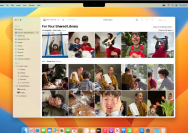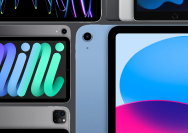Apple publicly released iOS 16.0.2 with a patchwork of bug fixes for the company’s latest mobile operating system – iOS 16. Just some of the remedies included with the update were a solution for the freaky camera vibration when using third-party apps.
And a resolution for the excessive clipboard permission prompts users would get upon pasting text copied from one app to another, among other things.
Related: How to use Find & Replace text in the Notes app on iPhone in iOS 16
Predictably, Apple is responding of its release of a newer update by ceasing to sign iOS 16.0 & iOS 16.0.1, the latter of which is a firmware Apple had dropped a few days after the first iOS 16.0 release to address some iPhone 14 Pro & 14 Pro Max-related bugs. The un-signing of this firmware means that users can’t readily upgrade or downgrade to iOS 16.0 or 16.0.1 using traditional means.

Nontraditional means of upgrading and downgrading to iOS 16.0 or 16.0.1 should still work, however, and those include using the DelayOTA method (to upgrade) and the FutureRestore method (to downgrade). These options are generally more difficult than just opening iTunes or Finder and Shift or Command-clicking the Update button to install the desired firmware version, so they’re not as commonly used.
It’s in no way out of character for Apple to close the signing window for an older firmware; the company regularly follows this practice to push users into upgrading their iPhone and iPad firmware by disallowing any other option. By doing this, Apple ensures users are protected by the latest security patches, utilizing the newest bug fixes, and enjoying the trendiest features. The adoption rates also please Apple’s shareholders.
Related: How to see your recently deleted messages and recover them on iPhone, iPad, and Mac
One reason why someone might not want to be forced into updating their iPhone or iPad’s firmware is for the sake of jailbreaking, which generally involves exploiting holes in the operating system’s security to install third-party mods and software known as jailbreak tweaks. These can alter the behavior of a device beyond stock parameters in ways that most users find generally pleasing.
Of course, jailbreaking isn’t the only reason why someone might want to downgrade to an older firmware, as new software can introduce annoying bugs.






